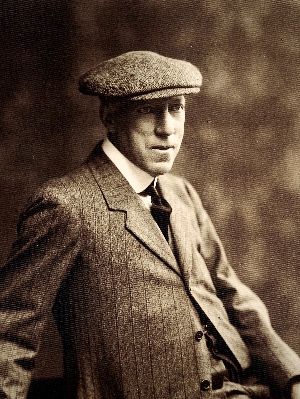Hemmings, William
Dancer
Collection date: Apr 1910
Area: Oxfordshire
William Hemmings of Abingdon morris (1849-1930): It was Mary Neal who in autumn 1909 discovered the Abingdon Morris Men. She brought the brothers William and James Hemmings up to the Esperance Club in London to teach three dances to the girls. The dances were ‘Sally Luker’, ‘A Nutting we will go’ and ‘Princess Royal’. All were published in the first Esperance Morris Book April 1910, Neal calling them ‘Berkshire’ dances because Abingdon was only made part of Oxfordshire in 1974.
The tunes were collected and arranged for piano by Mary Neal’s friend Mrs Mabel Tuke (1871-1962). Mrs Tuke was standing in as musical director following the resignation of Herbert MacIlwaine in November 1908 and the arrival of Clive Carey in the summer of 1910. She was at the same time Hon Sec of the Women’s Social and Political Union suffragette movement.
Whether in a spirit of competition or merely out of curiosity, Sharp visited William Hemmings and obtained 3 tunes on 1 April 1910 (FT2463-5). Two of the tunes were the same as Mrs Tuke collected but with slightly differing transcriptions. However instead of ‘A Nutting we will go’, Sharp collected ‘The Curly Headed Ploughboy’ (FT2463), which is still popular in folk sessions today. William Hemmings was aged 60 at this time and his brother James (57) also contributed towards Sharp’s history notes, which were recorded in Folk Dance Notes vol1 p102ff at the time.
Sharp revisited William Hemmings on 20/21 Sept 1922. Hemmings sang and then played melodeon for ‘Maid of the Mill’ (FT4924/4929); he also played ‘Jockey to the Fair’ and ‘Constant Billy’ plus ‘The Curly Headed Ploughboy’ (again). Sharp was able then to publish the full history of the Mayor of Ock Street and one dance ‘Princess Royal’ in Morris Book vol3 (2nd Edition 1924). This was his last publication. The story goes that in 1700 there was an ox roast in the town of Abingdon but a dispute arose as to who should have the horns of the beast. The men of Ock Street fought and won the horns, so that every year in June the horns are paraded through the town by the morris men. In fact the side won't dance at all without at least a replica of the horns on site. In addition a ‘mock mayor’ is elected and carried in procession. There have been several breaks in this tradition but it is well documented over the centuries.
For the full history of the Abingdon tradition, go to www.atmd.org.uk
William Hemmings was born July qr 1849 (Abingdon 6-128), second son of Thomas Hemmings, agricultural labourer and his wife Louisa. The family lived at Ock Street for decades. William married Eliza Stone at Sutton Courtenay on 24/12/1870. In the 1871 census at Ock Street William was listed as a railway porter, Eliza as a needlewoman. They had 4 children. William was a bricklayer for the rest of his life. His wife Eliza died in 1892 and William was remarried to Ann Badcock, a widow, in 1902. William died January qr 1930 (2c 375).

